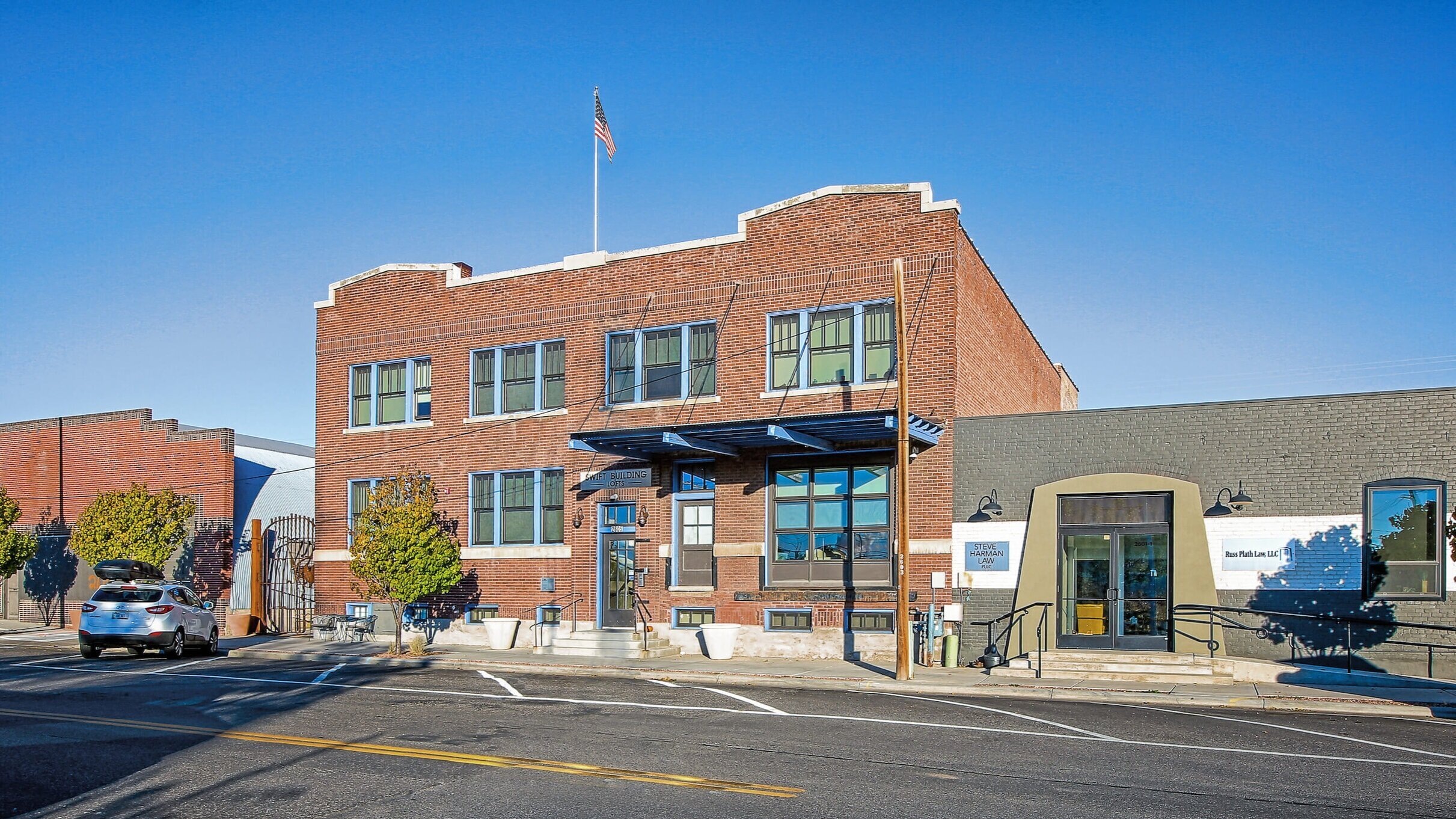THE IMPORTANCE OF REUSING OLD BUILDINGS AND HOW THAT CONNECTS TO THE MISSION OF EARTH DAY
“We do not inherit the earth from our ancestors, we borrow it from our children.” — Native American Proverb
Today is Earth Day, and while you will likely get blitzed with the environmental discussion on social media today, we just wanted to share our story and why we're doing our small part as architects to preserve a better future. First, just a quick recap...the mission of Earth Day is to diversify, educate and activate the environmental movement worldwide. We're sure most people had a general idea of what Earth Day is about but that's how the organizational entity of Earth Day defines itself. Earth Day is basically an awareness campaign/catalyst geared towards the environmental movement and a recruiting tool to get people to think about their everyday impact on the environment. We all know we can do better but today is an annual reminder to put that theory into action.
How does architecture fit into the discussion of Earth Day? In an ideal world, architects look for ways to reinforce the connection between the built environment and nature through smart design, careful material selection, intuitive planning, etc. We certainly are conscious of everything associated with environmental impacts as it relates to construction of places/spaces as well as the livability of places and how people use/interact with buildings. With new builds, that understanding is relatively straightforward because architects start with a blank slate and they start to define those interactions as soon as their pencils hit the sketchpad. The adaptive reuse of old buildings is where it can get tricky though and that's what we'd like to highlight here. The importance is reusing old buildings cannot be underestimated or discredited, especially as it relates to the environmental movement.
The beauty of old buildings varies significantly but their nostalgia is quite consistent. Old buildings often become landmarks. They are a reflection of our history and the face of cities. They are the constant visible "spirit" of the town that showcase just how far cities/towns have evolved. They help us understand the history of a place and allow us to comprehend and respect previous generations and how they lived and worked. Old buildings are cultural artifacts and more often than not, their bones are solid even when the urban decay happening around them implies differently. Why is that? A hundred years ago the science of building and building materials was not as well understood as today and consequently, buildings of that vintage were often “overbuilt” to ensure that there were not structural failures. As a result, these structures tend to hold up well over time. As it relates to the environmental movement, these "bones" must be considered for adaptive reuse for many reasons. Besides the nostalgia or historical significance, the following list highlights the environmental impacts:
Restoring old buildings is environmentally friendly as it is considered a form of recycling. Recycling reduces construction waste, saves energy that is typically spent on harvesting/manufacturing building materials, tools, and equipment, AND limits a significant amount to transportation needs to haul demolished structures away and bring in new materials.
Demolition concerns are plentiful in regards to trashing debris, pollution, and clearing the site.
In addition to the carbon emissions associated with the operation of buildings, we also need to be paying close attention to the embodied carbon of our buildings—how much fossil fuels are required to mine or harvest, manufacture, and transport materials to build the building? Remodeling an existing building typically requires 30-50% as much energy as new construction. From 2015-2050— the time period in which we absolutely MUST get our carbon emissions under control, the embodied carbon for a new building is about nine times as great as the carbon emissions from its projected operations.
Urban sprawl, and all that is associated with it. Those associations range from outrageous infrastructure costs needed for new development, more reliance on vehicular use and increased traffic congestion, undermining the vitality of existing urban areas, increased energy use, destruction of wildlife habitat and fertile lands for farming practices, increased pollution, etc.
Conventional wisdom is that adaptive reuse is much more expensive so ultimately for most consumers, the costs outweigh the environmental concerns. We're here to set the record straight and tell everyone that'll listen that isn't true. We've explored this through our own cost modeling (real Billings, Montana projects). We've also researched this through the National Trust for Historic Preservation and their cost modeling and numerous other sources. The truth is in the numbers as much as the heart is in the preservation. Old buildings that have outlived their original purpose can be brought back to life and adapted to modern-day living with loads of character, warmth of old materials, and a subtle nod to creative placemaking.
We're not saying all old buildings can be salvaged and new construction is a bad idea. What we are doing is advocating for people to rethink what old buildings represent and consider the environmental impacts associated with tearing them down. It is a complex thought process that requires a lot of knowledge and skills. We provide that guidance. Our mission is to serve and inspire our clients, community, heritage and environment by designing innovative, cost-effective, high-performance buildings that people love. We love the environment in which we live (what's not to love about Montana?) and our unique brand of architecture makes us feel good about what we're doing to push the Earth Day envelope. We've developed some very special expertise in giving retrofitted buildings a second, more productive life. If you are interested in learning more, please don't hesitate to contact us!
“When we build, let us think that we build forever. Let it not be for present delight or present use alone; let it be such work as our descendants will thank us for...” – John Ruskin

